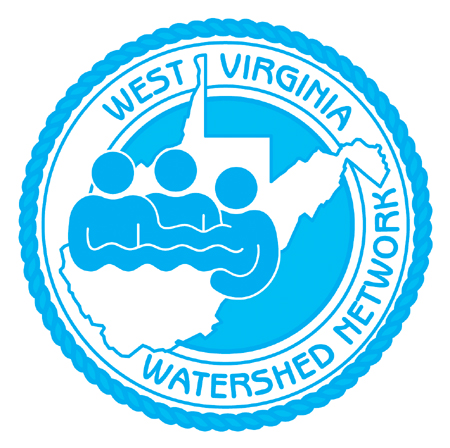 | | WV WaterNet: Summer Edition |
| |
|
| Upcoming Watershed Symposiums: Save the Date |
| Northern Basin The Northern Basin Watershed Group Gathering will be held at Valley Falls State Park on Monday, September 26th from 10am-3pm. Sessions will include Abandoned Mine Lands funding through the Bipartisan Infrastructure Bill, Clean Water State Revolving Funds, and more. RSVP to Martin Christ at Martin.J.Christ@wv.gov. Western Basin The Western Basin Watershed Group Gathering will be held at the Claudia L. Workman Wildlife Center at Forks of Coal State Natural Area on Friday, September 30th from 10am-4pm. Sessions will include presentations on new programs and tools, as well as watershed group updates. RSVP to Tomi Bergstrom at Tomi.M.Bergstrom@wv.gov. |
| | Southern and Eastern Panhandle Watershed Symposiums: Sharing Our Successes Southern Basin Gathering |
| 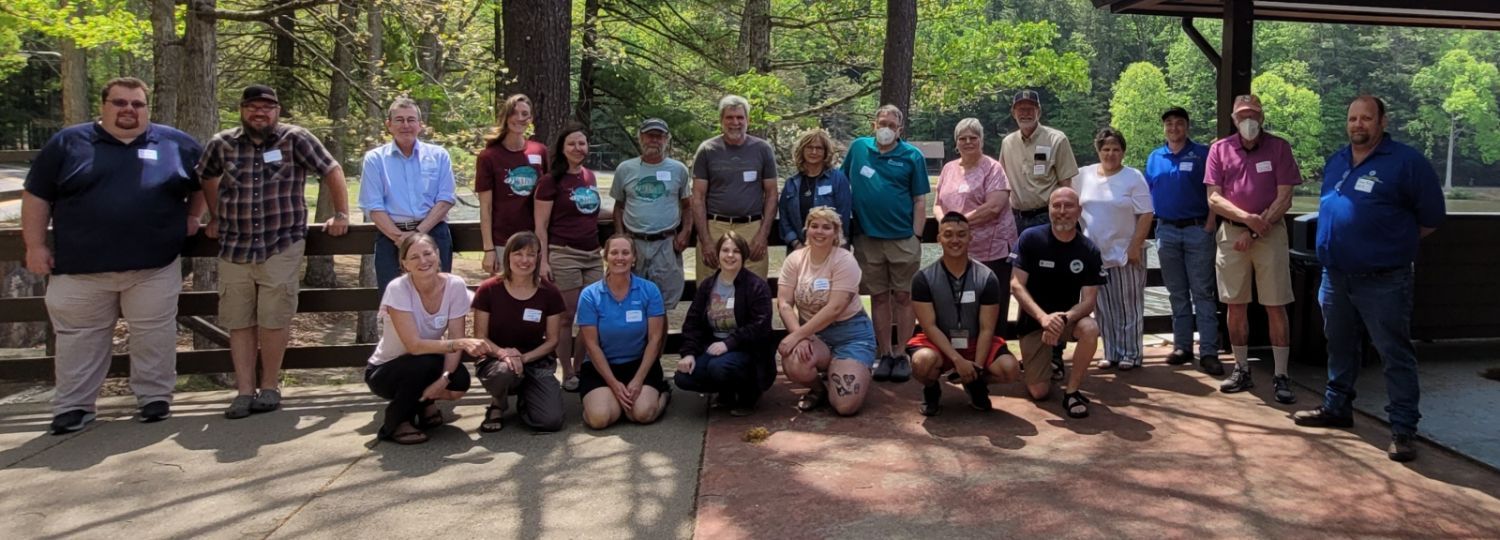 | Six watershed groups were represented at the Southern Basin Gathering. On May 20th, 2022, the Southern Regional Watershed Gathering was held in partnership with the WV Rivers Coalition and WV Department of Environmental Protection Watershed Improvement Branch. It was the perfect day with warm wind sitting next to the lake at Little Beaver State Park, in attendance were watershed groups and partners who sat together for the first time in person since the start of the pandemic. Watershed groups gave updates of projects and partners gave presentations on new programs and tools. - WVDEP’s Callie Sams, the Save our Streams Coordinator, discussed the upcoming Vernal Pool Monitoring program. Although monitoring trainings are not scheduled to start until spring 2023, volunteers can share vernal pool location observations on iNaturalist.
- WV Rivers Coalition’s Kathleen Tyner gave pointers on virtual media content and Jenna Dodson shared how to use the Stream Watch App to report pollution incidents.
- Abigail Bradshaw of Dig Deep’s Appalachia Water Project in McDowell County shared their project to remove straight pipes and help connect people to clean drinking water.
- Matt Ford discussed projects like the Meadow River Rail Trail, new boat launch and newly awarded brownfield funds to clean up an old landfill.
- Conservation Legacy’s Josh Jones discussed their VISTA program and upcoming conservation jobs program.
Watershed groups in attendance included: Indian Creek, Piney Creek, Greenbrier River, Meadow River, Friends of the Tug Fork and Guyandotte Water Trail. Lunch was provided by the Southern Conservation District. |
| Eastern Panhandle Gathering |
| Over 40 people participated in this year’s Eastern Panhandle Watershed Group Gathering. It was held at Cacapon State Park in Morgan County, and sponsored by the Eastern Panhandle Conservation District (EPCD). Presenters delved into useful topics including: conservation landscaping, local stream temperatures and fish health, and the science of septic systems. Watershed group volunteers and agency partners were excited to meet together in-person once again. The morning session consisting of updates from each group was especially conducive to networking, which was also given plenty of time on the agenda. Kristen Bisom of West Virginia Conservation Agency and the watershed committee of the EPCD are to be commended on a successful event. |
|
|
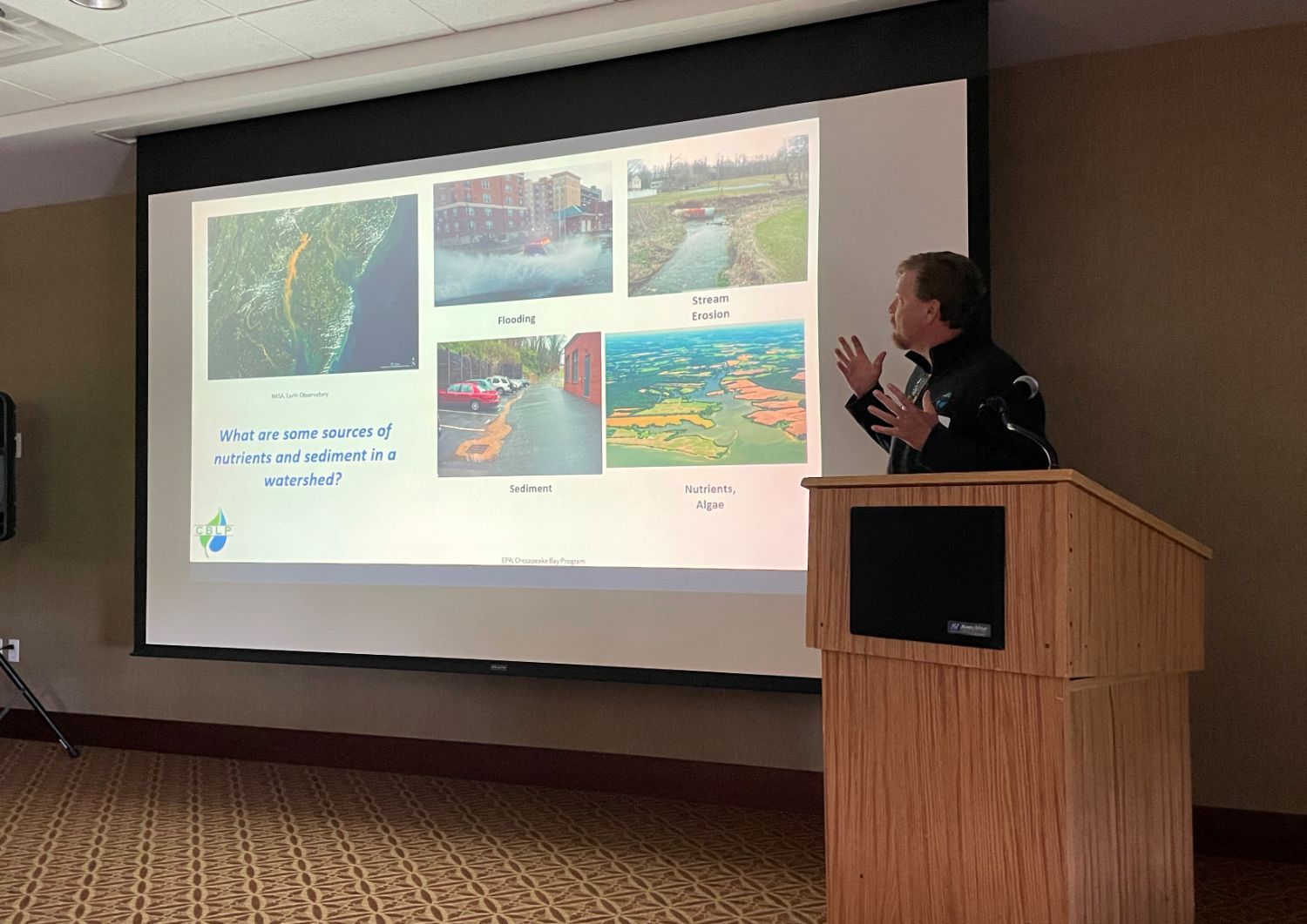 | Jason Swope, of Chesapeake Bay Landscape Professionals presents during the Southern Regional Gathering. |
|
|
| | Updates from Around the State: Connecting People with their Watershed |
| Cacapon Riverfest Thrilled the Crowds By: Peter Wood |
| 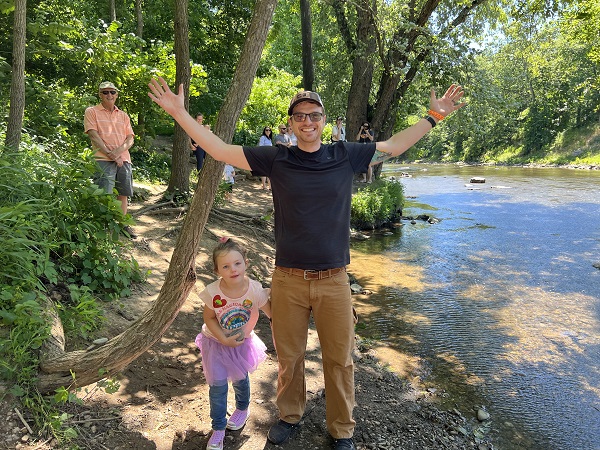 | Winners of the rock skipping contest. Photo courtesy of Ibi Hinrichs. |
|
|
The first annual Cacapon Riverfest in Capon Bridge, West Virginia was a rousing success. Held at the River House located on the banks of the Cacapon River, the two-day celebration was a fantastic festival with river activities, environmental education, art, food, drink and all-day music. Over 1,100 people gathered on Friday, June 17 and Saturday, June 18, 2022, with perfect weather. River activities included a rock skipping contest, a homemade boat float race and a chance to just sit in the river. Live music from incredible local talent played on the riverside stage throughout the day. Our Place, a 4-speaker series about the Cacapon River and our unique natural region, took place on the inside stage. |
|
|
| The River House yard was shaded and cool and the perfect spot for local environmental education groups set up tables. Folks from Cacapon and Lost Rivers Land Trust, WV Rivers Coalition, Cacapon Institute, Potomac Riverkeepers, WV Department of Environmental Protection (WVDEP), Potomac Highland Beekeeper Club, Hampshire Recycling Coalition, Trout Unlimited, and Friends of the Cacapon River engaged with festival visitors. |
| The kids were very excited about the WVDEP game, fishing-for-pollution with magnets. WVDEP also had lots of handouts, including activity books that were snapped up. The Cacapon Institute brought their cool handmade pinball machine to keep pollution out of the streams. Young and old enjoyed the hands-on game. There was a lot of buzz at the beekeeper's booth, literally. They brought a living hive! WV Rivers Coalition had a sign-up sheet for a WV Climate Pledge and collected many signatures. All the groups provided valuable opportunities for people to see how they can help protect our watershed and enjoy all the benefits the river offers us. |
|
|
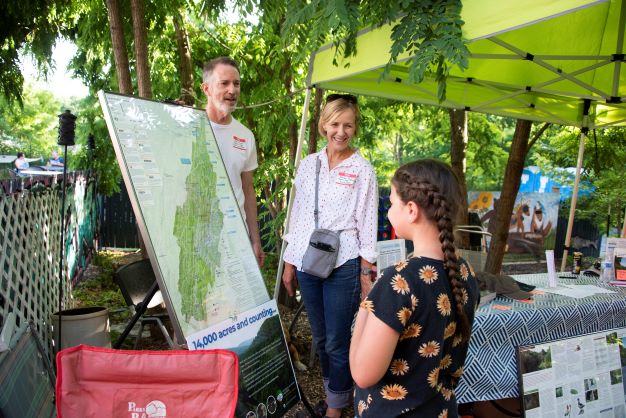 | A Riverfest attendee learning about the Cacapon Land Trust. Photo courtesy of Ibi Hinrichs. |
|
|
| Cacapon Riverfest is a free event coordinated by the Friends of the Cacapon River and hosted by The River House. Cacapon Riverfest is sponsored by the Friends of the Cacapon River, The River House, Cacapon and Lost Rivers Land Trust, Cacapon Institute, Potomac Riverkeepers, local business and individual donors, and by grants from the WV Department of Arts, Culture and History, and the WV Stream Partners Program. A good time was had by all. Get ready for CACAPON RIVERFEST 2.0 on JUNE 16-17, 2023! |
| Water Day at The Sustainable Future Forum By: Roseanna Sacco |
| The fifth annual Sustainable Future Forum was held at The Sweet Springs Resort Park from July 13th to July 17th. Sponsored by Sweet Springs Institute, a local non-profit organization, this year’s Forum proposed 7 days and 7 ways to answer a most important question: What world do we want to live in… and leave to future generations? As humanity stands at a seminal crossroads where every decision we make has a crucial impact on the direction we take - to either support Life or stifle it - this year's Forum focused both on the urgency of taking action and the necessity for connecting to the stillness of mind that makes action timely, pertinent and wise. Although the Speakers' messages were specific to their particular areas of expertise - medicinal plants, food, energy, ethics-in-action, soil health, the Sustainable Self and water - collectively they spoke with 'one Voice' calling upon humanity to stand together beyond all differences, to ‘Save our World’. The last day of the Forum was devoted to Water and drew over 260 viewers on Facebook Live to hear a response to the question, ‘What are we doing to water… and what is that doing to us?’ |
| Howdy Henritz, President of the Indian Creek Watershed Association answered “privatization” and proceeded to inform the audience that 2 French companies, Suez and Veolia control over 70% of the world’s water supply. He cautioned the audience to be aware of ongoing efforts to convince municipalities to privatize water and to think about the consequences that turning an innate right into a commodity – a product that sells primarily on the basis of price rather than quality – could have on populations who must have water to stay alive, but can’t afford to pay. Jennifer Liddle, Southern Basin Coordinator of the WVDEP outlined the resources offered by the WVDEP and why being informed and involved is key. She focused on the possibility watershed groups have to build their structure and transition to projects that could be funded by Clean Water Act grants. She also mentioned the Chesapeake Bay Program, a unique regional partnership that has coordinated the restoration of the Chesapeake Bay and its watershed since 1983. The program has pockets of funding focused on reducing the entry of pollutants such as excess nutrients, sediment and chemical contaminants into the Bay. |
|
|
|
|
| Autumn Crowe, Program Director of WV Rivers Coalition addressed the challenges to strengthening current water policy in WV and the opportunities provided by the Infrastructure, Investment and Jobs Act. She also informed the audience of a smart phone stream monitoring app that allows people to take on-site pictures of existing or potential threats to water and send them directly to her for review. You can view the training video and find instructions on how to download the app at this link. |
|
|
| Next, Roseanna Sacco of the Sweet Springs Watershed Association (SSWA) presented a Power Point entitled ‘The Little Blue Drop’ to illustrate the finite quantity of water on our planet and the very small percentage of it that is actually available for human consumption. She also projected images of the water crystals made by Masaru Emoto from samples of the Sweet Springs drinking water and Healing Springs. After a short break, Louanne Fatora, Coordinator of the Greenbrier River Watershed Association, began her presentation by informing the audience that the Greenbrier River is the longest untamed, unblocked river in the eastern USA. The upper reaches of the river flow through the Monongahela National Forest, paralleled along 77 miles by the famous Greenbrier River Trail which has hosted the many recreational and educational events that take place along its banks. The Watershed Association was co-founded in 1990 by Leslee McCarty for whom a memorial tribute was then initiated by Louanne and the Watershed Board members. Many of the in-person participants also stepped up to honor the life of one of West Virginia’s most beloved and dedicated Water Protectors. |
| The final presentation was delivered by Ed Saugstad, current President of the Friends of THE Second Creek watershed who addressed the question ‘Water is Life… what can we do to make it more relevant?’ Holding a beautiful, colored booklet put together by Dixie Lee Hoke and cohorts in his hand, Ed described the watershed’s ongoing efforts to make water more relevant to 2nd grade school children in Monroe County. ”The theme,” he said, “is simple: the thing that connects everything is water. We cannot exist without it and that’s why we must be doing everything we can to protect it.” |
|
|
| Northern Basin Watershed Groups Promote Their Rivers Through Boat Trips By: Martin Christ Bill Currey of the Coal River Group once realized a very simple principle: “If you want people to care about a river, you have to put people on the river!” Using this principle, he and the Coal River Group (CRG) established the Tour de Coal, an annual float on the Coal River with more than 2,000 paddlers. That brought attention and boaters to the Coal River all year round, and has even spawned an industry of boat liveries and trip services for paddlers, as well as water monitoring and clean-ups. Many watershed groups in the northern part of the state are starting to learn Bill’s principle and are organizing float trips, so far at a smaller scale. Some efforts are simple, one-time meet-ups for paddling. Some are larger and include formal outreach about the organizations involved. All of them can be fun! Be careful! The following stories might push you over the edge and get you to organize your own trip! Safety first! Follow the law! If you are on the water in a vessel, West Virginia law requires that you have a PFD (life jacket) that is in good condition, properly sized and readily available for each person on board. Any child under the age of 13, including infants, must wear a PFD while the vessel is underway. More good tips: Don’t boat during a storm or if heavy weather is in the immediate forecast. Let someone know where and when you will be boating. Try to have someone on your trip who has been down the stretch before, who knows where the trouble spots and possible hazards are. Keep track of how many boats are in your group. Count often to make sure you still have the right number. Here are some of the groups who have organized recent trips. |
|
|
| The Guardians of the West Fork River Watershed started one of the simplest trips with a post on the West Fork River Water Trail Facebook page. The post simply named a time and place to start and a take-out point. “Shuttles” are sometimes difficult–if you drive to the put-in and paddle to the take-out, how do you reunite with your car? For the Guardians’ trip, the declaration was general–people were urged to leave vehicles at the take-out, and a few drivers drove the other drivers to the put-in. |
|
|
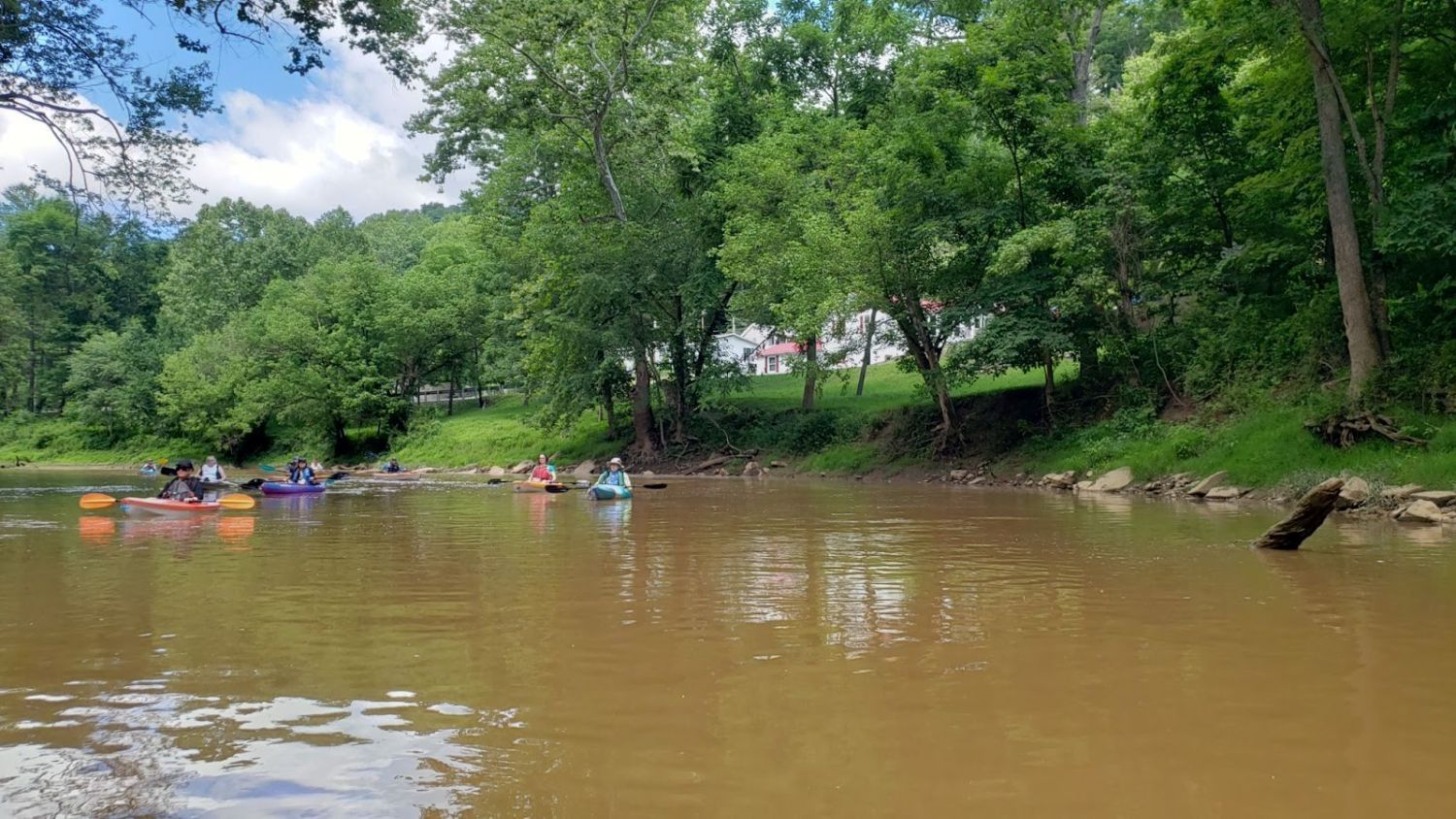 | Eleven paddlers traveled together from Good Hope to West Milford in June. |
|
|
|
|
| With a little discussion among the paddlers, it worked out smoothly. Eleven boats traveled from Good Hope, in Harrison County near the Lewis County border, downstream to West Milford, also in Harrison County. It was an ideal day for a trip. No rain, but the water was high enough that boats glided smoothly the whole way, without any need to get out and walk the boats, or even to scrape them, over shallow stretches. In 2018 and 2019, the Guardians held a Float the Fork event, complete with music and food vendors at the take-out. The Guardians did not have the person-power to put that event on again after the pandemic, but the river is still there offering good trips and needing love and protection from paddlers. The Morgantown Area Paddlers (MAP) are not officially a watershed association, but they have put a lot of people on many different rivers. They have turned Facebook into a machine for turning posts into river trips! Various people post places and starting times for trips on their Facebook community, and whoever shows up shows up. More than 2,000 people “like” the MAP community and check into its posts for upcoming trips. There are photos from many of the recent trips, and information about floats organized by others are advertised as well (note the Parkersburg Paddlefest from September 16 to 18). The MAP community publicizes and probably causes a number of resources for paddlers to appear. They have published a guide where paddlers can locate river access points. They have been instrumental in installing EZ docks, which are docks with rails and wheeled chutes that allow boaters to get into a boat while it is still on something solid, and then roll into the water. On exit, a boater can pull themselves along the rails up onto the solid dock, and then climb out again with less risk of tipping into the water. Morgantown Magazine has described their trips in several articles. |
| 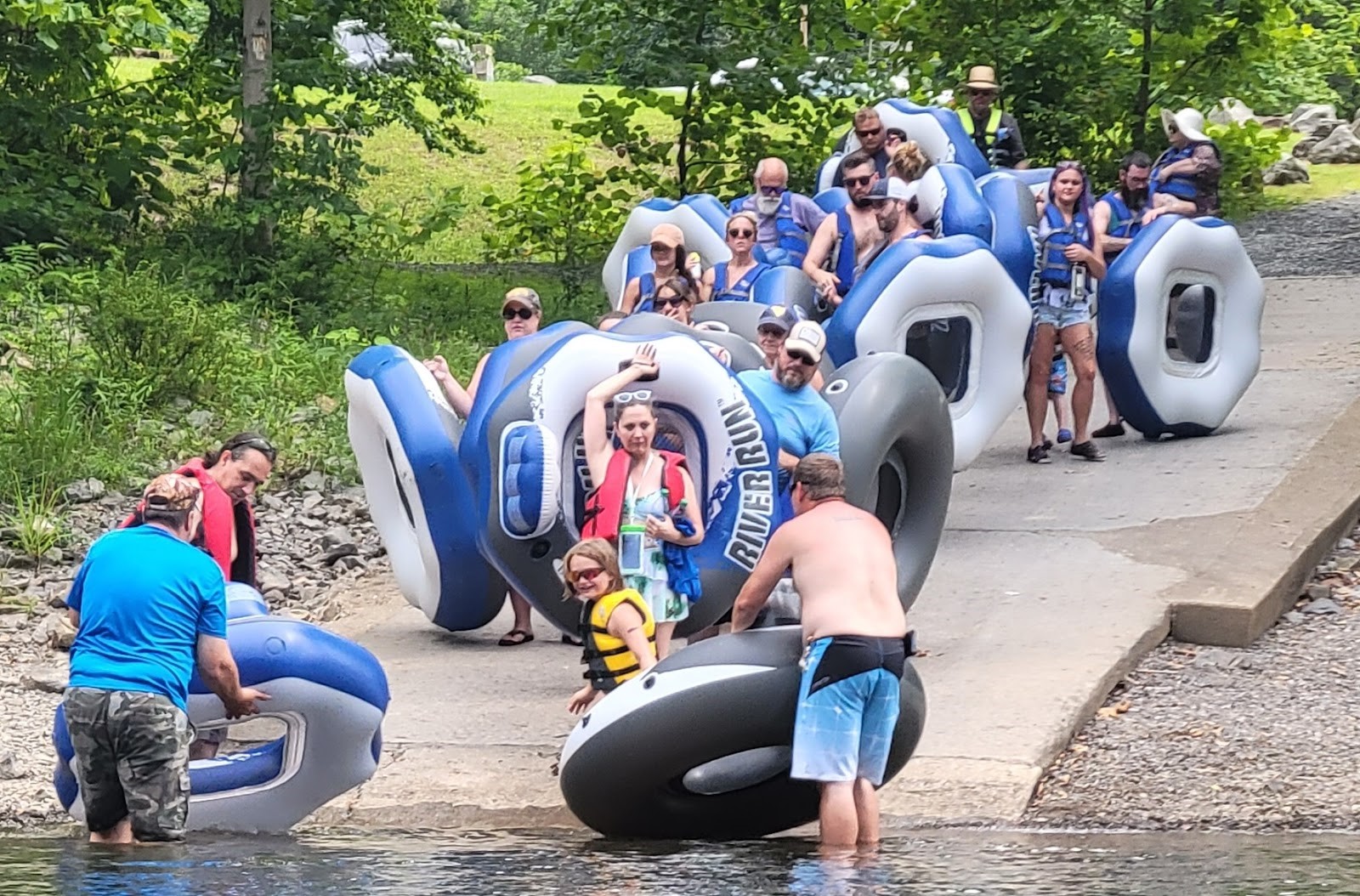 | Innertube riders launch from City Park in Grafton during Save the Tygart's Fish and Float Festival. |
|
|
Save the Tygart Watershed Association (STTWA) combined their first organized float with a festival and a race. STTWA has been working with the WVDEP Brownfields program and the Northern Brownfields Assistance Center at WVU to turn a former pottery factory into a park, nature center, historical site, and headquarters. To bring attention to their efforts, the group held a festival at nearby City Park. The Fish and Float Festival not only included food trucks, arts and crafts, and fishing demonstrations, but also a canoe and kayak race and a lazy river innertube float, right past the pottery factory and into the City of Grafton. |
|
|
| Friends of the Cheat (FOC) seeks to restore, preserve, and promote the outstanding natural qualities of the Cheat watershed. That watershed includes the Cheat Canyon, which has hosted whitewater river trips since the 1960s. That trip is not for beginners, but there are other parts of the Cheat River as well. See the Cheat River Water Trail website for ideas. The Cheat has a relatively flat water stretch from Parsons, in Tucker County, to Rowlesburg, in Preston County. With many partners in that area, Friends of Cheat developed the Upper Cheat Water Trail. They worked with the West Virginia Division of Natural Resources and riverside landowners to identify several places where paddlers could park cars and launch boats. |
|
|
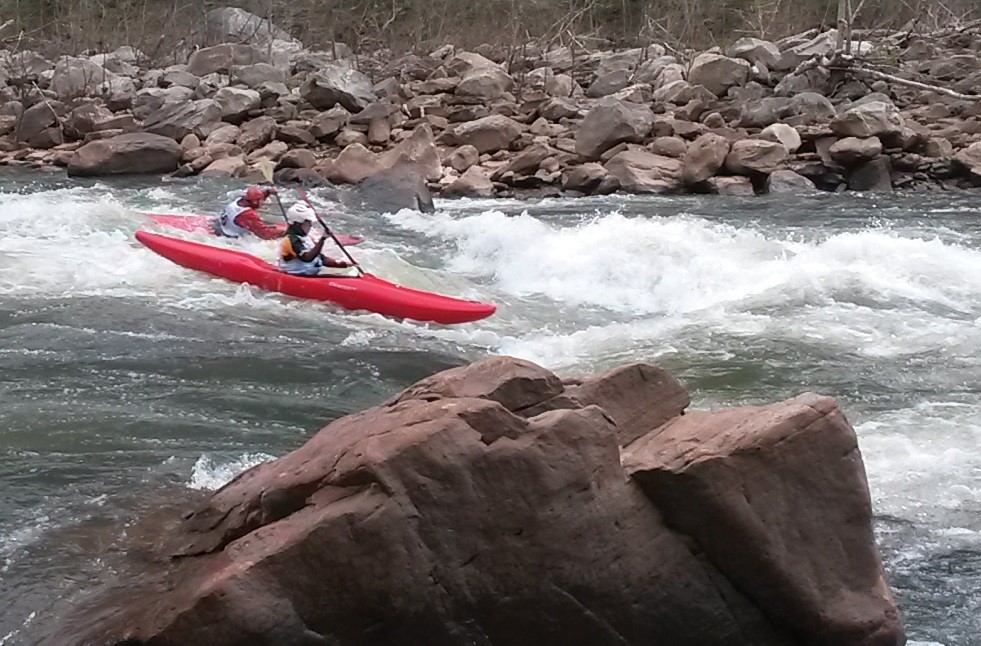 | Kayakers encounter the rapid known as Big Nasty on the Cheat Canyon whitewater run. |
|
|
| Each summer, FOC puts on one or more “Meet the Cheat” events, where they help people get on the water in their own boats or in one rented by one of their partners. |
|
|
| 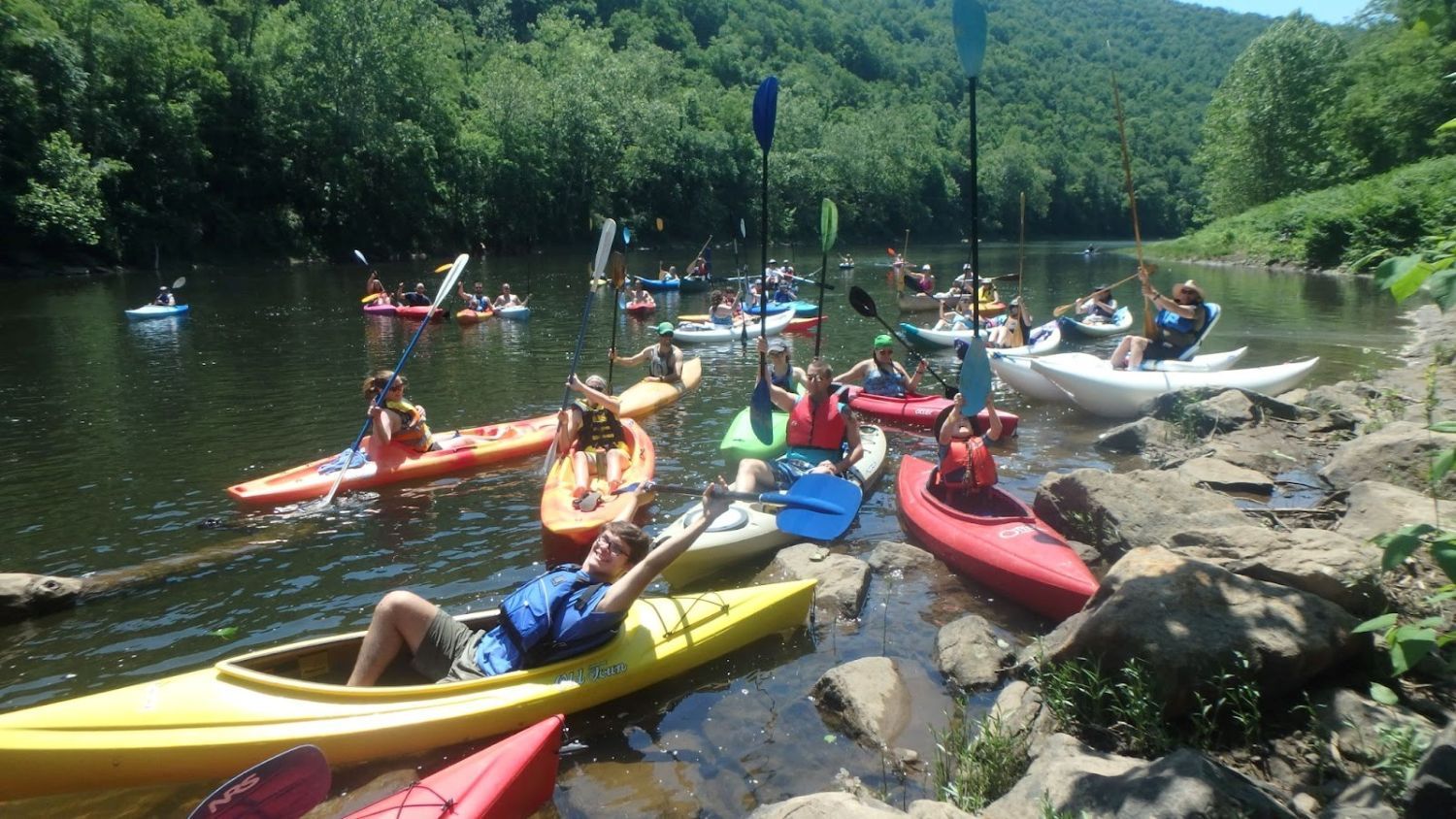 | Meet the Cheat paddlers salute after a successful river trip. |
|
|
FOC has not only promoted the river, they have also promoted nearby businesses. Blackwater Outdoor Adventures helps out by renting boats to some Meet the Cheat paddlers and providing a parking space and a ride to the put-in for others. If Meet the Cheat turns out to be your gateway drug, they can take you on trips down the intermediate whitewater Cheat River Narrows section as well. Food shops are also gaining business. There are stands in Rowlesburg City Park and restaurants in Parsons ready to feed you. |
|
|
| | West Virginia Rivers Coalition
3501 MacCorkle Ave SE #129 | Charleston, West Virginia 25304
304-637-7201 | wvrivers@wvrivers.org |
| The WV WaterNet is made possible through an award of Environmental Protection Agency’s 319 funding awarded to the West Virginia Rivers Coalition by the West Virginia Department of Environmental Protection. |
|  | |
|
| |
|
|